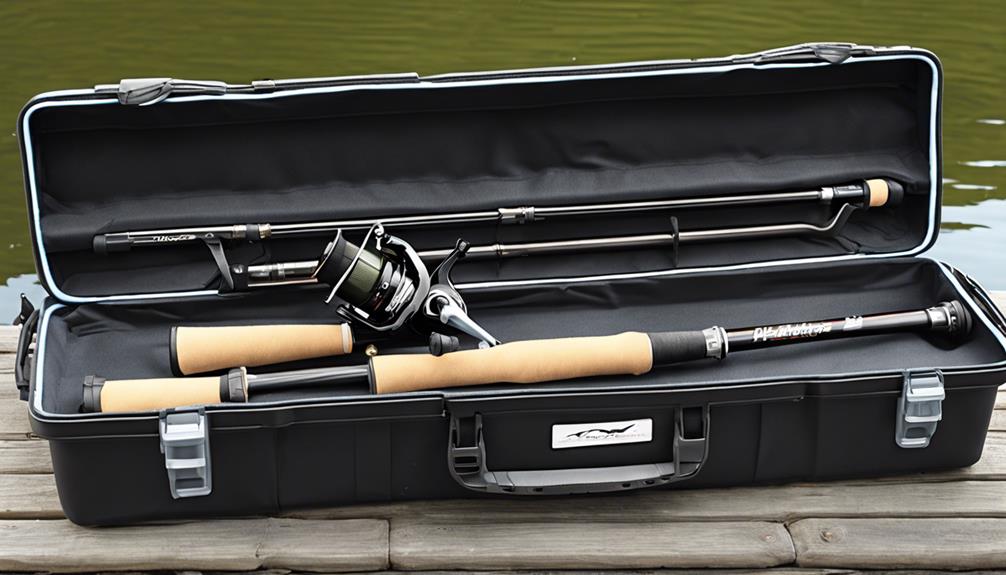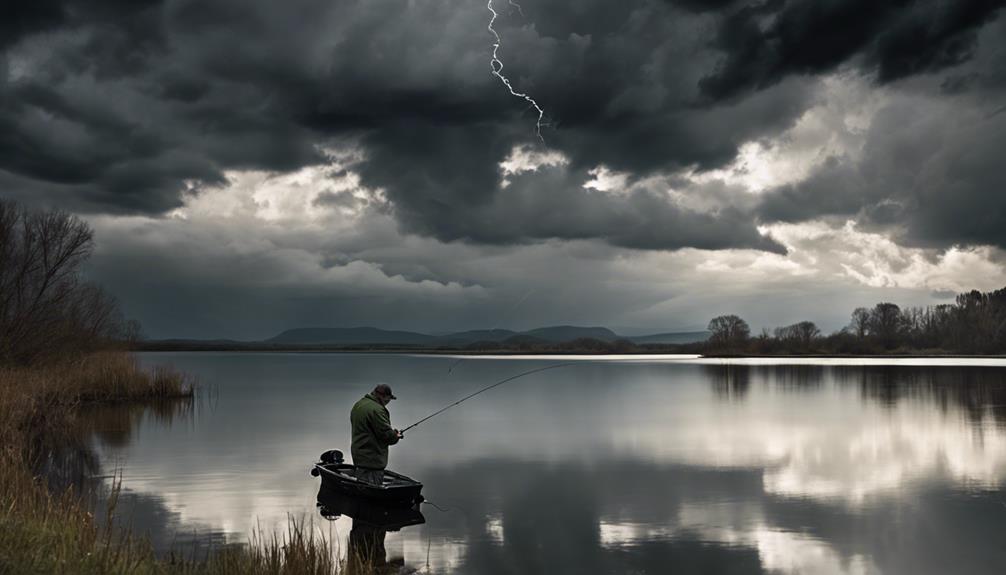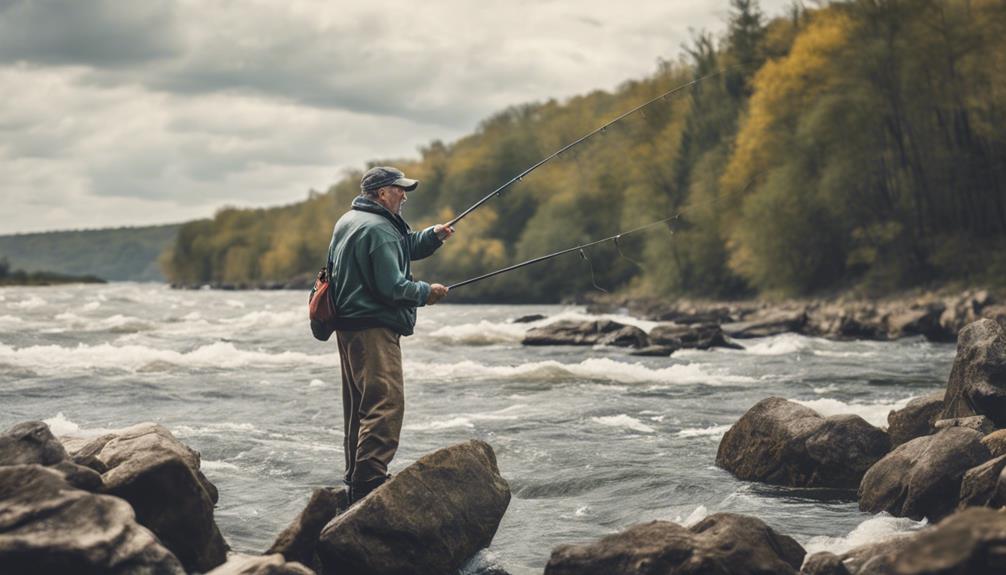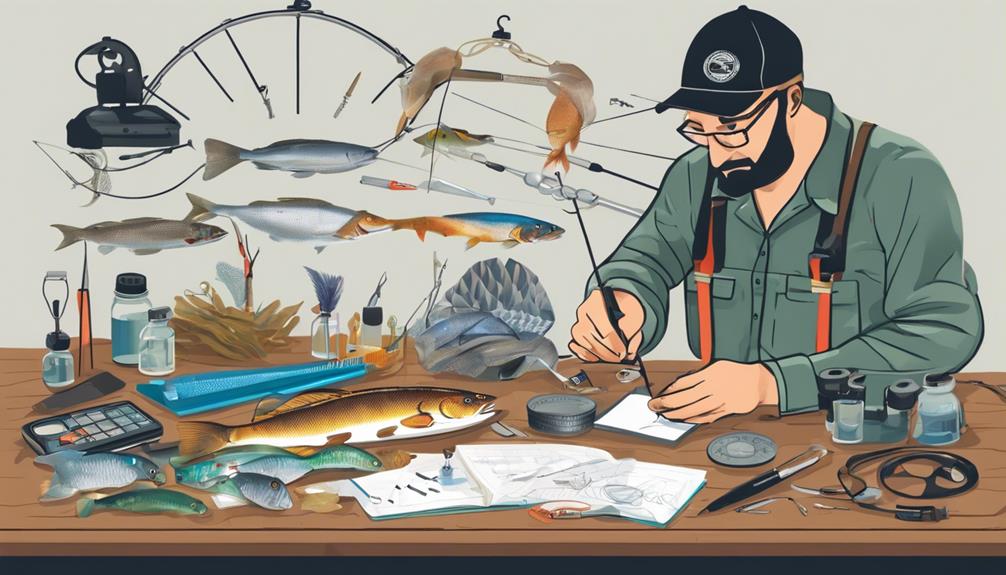You've just invested in top-of-the-line angling equipment, and now you want to make sure it stays in prime condition for all your upcoming fishing expeditions.
But how do you ensure your gear remains competitive and reliable without constant replacements?
By following these 5 best tips for maintaining your angling equipment, you can extend its lifespan and performance on the water.
From cleaning routines to storage practices, each tip plays a crucial role in preserving your equipment's quality and functionality.
Clean Equipment After Each Use
After your fishing trip, make sure to clean your angling equipment thoroughly to prevent corrosion and extend its lifespan. Neglecting to clean your gear can lead to rust and deterioration, impacting its performance and longevity.
To begin, rinse your fishing rod and reel with fresh water to remove any salt, sand, or debris that may have accumulated during your outing. Use a soft cloth or sponge to gently wipe down the surfaces and components of your equipment. Pay special attention to the reel handle, spool, and guides, as these areas are prone to corrosion if not properly cleaned.
Next, consider using a mild soap or specialized cleaning solution to further remove any stubborn dirt or grime. Be cautious not to use harsh chemicals that could damage the materials of your gear. After cleaning, ensure that all parts are completely dry before storing your equipment to prevent moisture-related issues.
Regularly cleaning your angling equipment not only maintains its appearance but also ensures that it functions optimally each time you head out to fish. By taking the time to care for your gear after each use, you can significantly prolong its lifespan and enhance your overall angling experience.
Inspect for Damage Regularly
Regularly inspect your angling equipment for damage to ensure its continued reliability and performance. By conducting routine checks, you can significantly contribute to the longevity of your gear while minimizing potential repair costs. Damage prevention is key to maintaining peak performance and avoiding unexpected failures while out on the water.
To begin, carefully examine all components of your angling equipment for any signs of wear and tear. Check for fraying in the fishing line, cracks or dents in the rod, and any loose or rusted parts on the reel. Addressing these issues promptly can prevent further damage and enhance the overall performance of your gear. Remember, a small investment of time in regular inspections can save you from costly repairs down the line.
Additionally, pay close attention to areas that are more prone to damage, such as the rod guides or reel handles. These parts are crucial for the proper functioning of your equipment and should be inspected thoroughly. By identifying and addressing potential issues early on, you not only ensure the reliability of your gear but also improve its overall performance on the water.
Lubricate Moving Parts as Needed
To maintain optimal performance, ensure to lubricate the moving parts of your angling equipment as required. Regular lubrication helps prevent rust from forming on metal components and ensures smooth operation when casting your line or reeling in a catch.
Here are some essential tips to help you keep your angling equipment in top condition:
- Choose the Right Lubricant: Select a high-quality lubricant specifically designed for fishing equipment. Avoid using general-purpose oils or greases that may attract dirt and debris, leading to potential damage over time.
- Apply Lubricant Sparingly: When lubricating moving parts such as reels, hinges, or pivot points, remember that a little goes a long way. Over-lubricating can attract dust and grime, causing more harm than good. Apply a small amount of lubricant precisely where needed for optimal results.
- Regular Maintenance: Make lubricating moving parts a part of your regular maintenance routine. Check your equipment after each fishing trip for signs of wear or dryness. Proper storage in a dry and cool place can also help prolong the effectiveness of the lubricant and prevent corrosion.
Store Gear Properly When Not in Use
Properly storing your gear when not in use is crucial for maintaining its condition and extending its lifespan. To prevent rust and organize your gear efficiently, consider investing in a tackle box or storage system with compartments. Storing tackle separately from other gear can prevent damage caused by hooks or weights getting entangled with lines or rods.
Ensure that your gear is clean and completely dry before storing it to prevent rust from forming on metal components. After a fishing trip, take the time to wipe down rods, reels, and other equipment with a cloth to remove any moisture or salt residue. For reels, consider loosening the drag to reduce tension on internal components during storage.
Organize your gear based on type and frequency of use to make it easier to locate items when needed. Keep frequently used gear easily accessible while storing less-used items in a separate section of your storage system. This not only helps prevent damage from overcrowding but also saves time when preparing for your next fishing excursion.
Replace Worn-Out Components Promptly
When maintaining your angling equipment, promptly replace any worn-out components to ensure optimal performance and longevity. Keeping your gear in top condition is crucial for a successful fishing experience.
Here are some key points to consider:
- Regular Inspections: Make it a habit to inspect your equipment regularly for any signs of wear and tear. Check for frayed lines, rusted hooks, or damaged reel handles. By catching these issues early on, you can prevent them from escalating and causing further damage to your gear.
- Follow Maintenance Schedules: Stay on top of maintenance schedules recommended by the manufacturer. This includes replacing components like drag washers, bearings, or line guides at the specified intervals. Following these schedules will help keep your equipment functioning smoothly and extend its lifespan.
- Invest in Quality Replacement Parts: When replacing worn-out components, opt for high-quality replacement parts. While it may be tempting to choose cheaper alternatives, investing in top-notch components will ensure better performance and durability for your angling gear.
Keep Reels and Rods Well-Maintained
Ensure your reels and rods receive regular maintenance to prolong their lifespan and performance on your angling adventures. Proper storage is crucial in maintaining the quality of your equipment. When not in use, make sure to store your reels and rods in a dry area away from direct sunlight to prevent damage from the elements. Consider investing in rod racks or protective cases to keep them organized and shielded from potential harm.
Regular maintenance is key to keeping your reels and rods in top condition. After each fishing trip, rinse them with fresh water to remove any salt, sand, or dirt that could cause corrosion or abrasions. Inspect the guides, reel seat, and handle for any signs of wear and tear, such as loose screws or cracks. Make any necessary repairs promptly to prevent further damage.
Ensure your reels are properly lubricated to maintain smooth operation. Use a reel oil or grease recommended by the manufacturer to lubricate the bearings and moving parts. Check the drag system regularly and adjust it according to the type of fish you're targeting. By staying on top of maintenance tasks, you can enjoy long-lasting performance from your angling equipment and maximize your success on the water.
Use Protective Cases for Transportation

To protect your reels and rods during transportation, consider using protective cases to safeguard them from potential damage. These cases offer impact resistance and waterproof protection, ensuring your valuable angling equipment stays safe and in top condition.
Here are three reasons why using protective cases is essential for transporting your gear:
- Impact Resistance: Protective cases are designed to withstand bumps, knocks, and rough handling during transit. By storing your reels and rods in these sturdy cases, you reduce the risk of damage caused by accidental drops or pressure from other items in your vehicle. This added impact resistance ensures that your equipment remains intact and ready for use when you reach your fishing destination.
- Waterproof Protection: Whether you're traveling by boat, car, or on foot, your angling gear can be exposed to moisture and unpredictable weather conditions. Protective cases with waterproof features shield your reels and rods from rain, splashes, and humidity, preventing rust, corrosion, and water damage. With waterproof protection, you can fish with peace of mind knowing that your equipment is well-protected against the elements.
- Easy Organization: Using protective cases not only safeguards your reels and rods but also helps keep your gear organized. These cases often come with compartments and secure fastenings to keep everything in place during transportation. By storing your equipment in dedicated cases, you can easily locate and access your gear when you're ready to start fishing, saving you time and hassle.
Follow Manufacturer's Maintenance Guidelines
Follow your angling equipment manufacturer's maintenance guidelines carefully to ensure optimal performance and longevity of your gear. Proper storage is key to keeping your equipment in top condition. When not in use, make sure to store your rods, reels, and other gear in a cool, dry place away from direct sunlight and extreme temperatures. Hanging rods vertically or storing them horizontally can prevent warping and damage. Reels should be stored with the drag loosened to prevent compression on the washers.
Regular inspection is another crucial aspect of following manufacturer's guidelines. Before each outing, inspect your equipment for any signs of wear or damage. Check rod guides for cracks, reel seats for looseness, and reels for smooth operation. Look out for any corrosion on metal parts and replace any worn-out or damaged components as recommended by the manufacturer.
Frequently Asked Questions
Can I Use Regular Household Cleaning Products to Clean My Angling Equipment, or Do I Need to Use Specific Products?
You can use regular household cleaning products to clean your angling equipment, but it's best to use specific products for better results. Proper storage and cleaning techniques are essential to maintain your gear.
Consider using eco-friendly and angler-friendly products that are gentle on your equipment and the environment. It's a good practice to invest in products designed for angling gear to ensure longevity and optimal performance.
How Often Should I Replace the Fishing Line on My Reel?
When to replace your fishing line depends on line tension and knot strength. Inspect it regularly for wear and tear.
As a rule of thumb, consider changing it every 6-12 months for optimal performance. Also, make sure to keep your reel well-lubricated to prevent damage.
Proper rod storage is crucial too. By following these maintenance tips, you'll ensure your angling equipment stays in top shape for your next fishing adventure.
Are There Any Specific Tools or Equipment I Need to Properly Inspect My Angling Gear for Damage?
To properly inspect your angling gear for damage, you'll need specific tools like pliers, line clippers, and a magnifying glass. These tools help you catch any wear and tear early on, preventing further damage.
Regularly checking your equipment with these inspection tools is crucial for gear maintenance and ensuring your angling gear stays in top shape for your fishing adventures.
What Are Some Common Signs of Wear and Tear on Fishing Equipment That I Should Be on the Lookout For?
When maintaining your fishing gear, watch out for common signs of wear like frayed lines, rusted hooks, or loose reel handles. These issues can affect your angling performance and even cause gear failure.
Regularly inspect your equipment and use proper maintenance techniques to keep it in top shape. Remember, prevention is key.
If you notice any signs of wear and tear, consider replacement to ensure a successful fishing experience.
Is It Necessary to Have Professional Maintenance Done on My Angling Equipment, or Can I Handle Most Maintenance Tasks Myself?
You can definitely handle most maintenance tasks yourself when it comes to your angling equipment. DIY maintenance is a great way to keep your gear in top shape without breaking the bank.
However, for complex issues or expert repairs, professional services could be necessary.
Conclusion
So there you have it – by following these 5 best tips for maintaining your competitive angling equipment, you can ensure that your gear stays in top condition and ready for your next fishing adventure.
Remember to clean, inspect, lubricate, store properly, and replace worn-out components to keep your reels and rods well-maintained.
By following these guidelines and using protective cases for transportation, you'll be well-equipped for success on the water.
Happy fishing!



